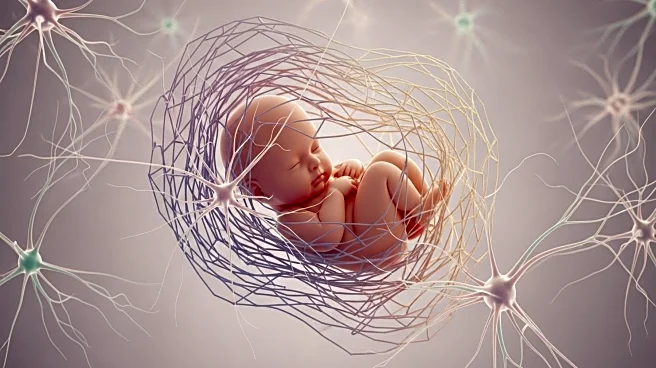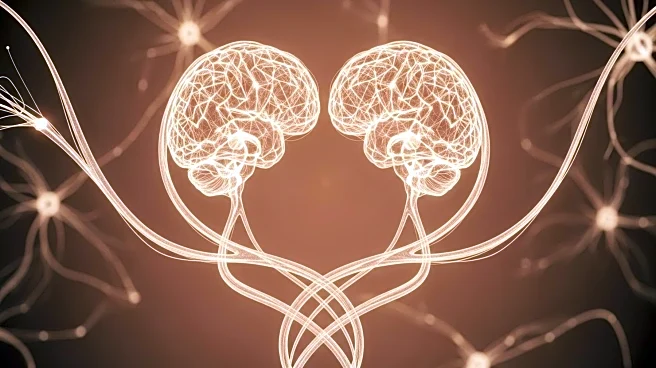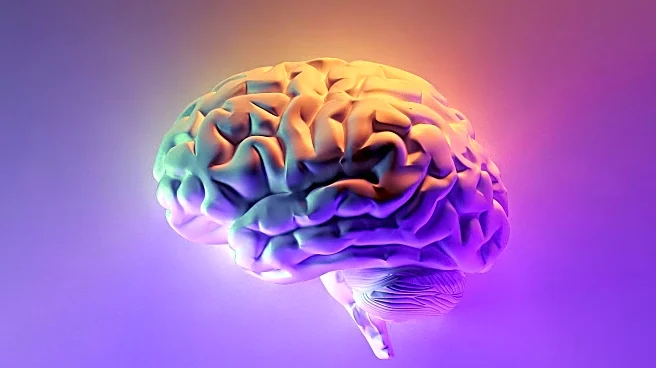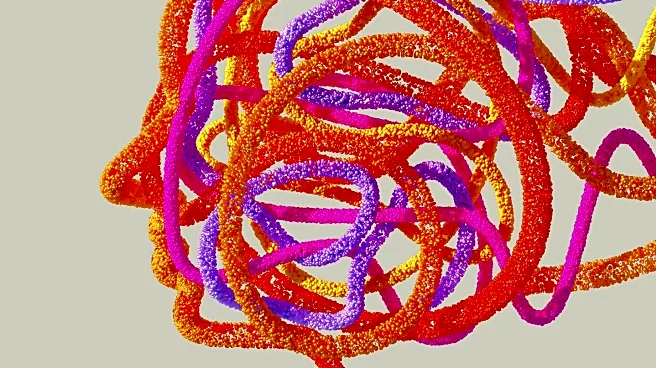What is the story about?
What's Happening?
A study conducted by Yale researchers has revealed that the brain's social perception pathway, responsible for processing faces, gaze, and speech, is active at birth. This discovery was made using advanced imaging data from the Developing Human Connectome Project. The study found that infants with stronger early connectivity in this pathway paid more attention to faces at four months and exhibited fewer social difficulties by 18 months. This research provides insights into the neural roots of social behavior and could aid in the early detection of autism spectrum disorder. The findings were published in Biological Psychiatry: Global Open Science.
Why It's Important?
The study's findings are significant as they offer a potential early marker for autism spectrum disorder, a condition characterized by social difficulties. By understanding the early development of the brain's social perception network, researchers can better identify children at risk for autism and other social disorders. This could lead to earlier interventions and support for affected individuals, potentially improving their social outcomes. The research also highlights the importance of early brain connectivity in shaping social behaviors, which could influence future studies and treatments in neurodevelopmental disorders.
What's Next?
The research team plans to continue exploring the brain processes that drive social attention in typical development and those involved in social vulnerabilities associated with autism. They aim to follow a larger group of children over time to gain a deeper understanding of these processes. This ongoing research could lead to the development of new diagnostic tools and interventions for autism and other social disorders, ultimately improving the quality of life for affected individuals and their families.
AI Generated Content
Do you find this article useful?















